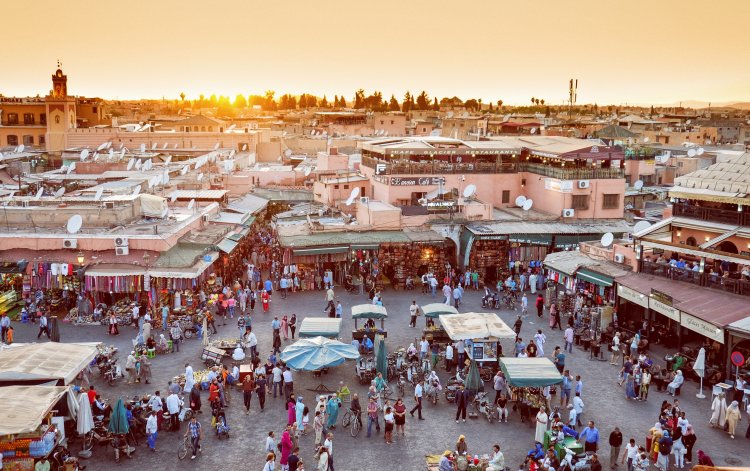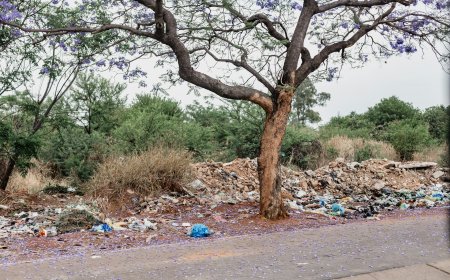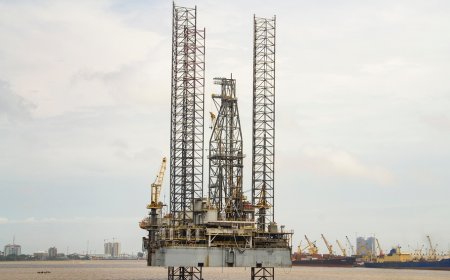This article is part of a series of special thought pieces that APRI published in partnership with the African Climate Foundation in the run up to COP27 in Egypt. The series is titled “What does the Just Transition mean for Africa”.
Summary
- A just transition implies Africa using its abundant conventional (oil and natural gas) and renewable energy resources to bridge the continent’s energy access deficit and to drive industrialisation and job creation.
- Achieving Africa’s climate goals is confounded by the limited fiscal space available to governments in the sub-region to implement their NDCs and the challenging external environment of the ongoing Russia-Ukraine war.
- African countries at COP27 must call for an equitable transition and closely scrutinise climate finance flows, given the inadequacy of funds and significant proportions being loans offered at commercial rather than concessional rates. The latter exacerbates fragile public finances and debt vulnerabilities.
- African leaders must advocate novel forms of finance, such as using debt-for-climate swaps and grant-based or highly concessional finance.
- A clear operational definition of climate finance that allows tracking and assessing the fulfilment of obligations by member countries under the UNFCCC is urgently needed. The UNFCCC reporting architecture needs to provide further granular operational definitions, otherwise the practice of each developed country individually deciding on what it reports as ‘climate finance’ is likely to persist.
Background
Africa has contributed the least to global climate change – mostly human-induced long-term shifts in temperatures and weather patterns — yet it stands to bear its severest negative consequences, such as droughts, heavy rainfalls, floods, and heatwaves. Available data from various global organisations indicate that Africa’s contribution to global GHGs stood at less than 4% as of 2020, and its CO2 emissions per capita have barely increased over the past three decades despite the two-fold increase in the sub-region’s population from 509 million people in 1990 to 1.11 billion in 2019. In contrast, the top ten developed economies, with 75% of global GDP, account for two-thirds of annual global GHGs. This includes China (26%), the United States (13%), India (7%), the European Union (7%), Russia (4%), Indonesia (4%), and Brazil (3%).
Nevertheless, as the IPCC’s Sixth Assessment Report unequivocally demonstrates: we must limit global temperature rise to 1.5°C (2.7°F), per the 2015 Paris Climate Agreement, to prevent the worst effects of climate change. For this to happen, a significant amount of climate financing is required to move to a net-zero future and adapt to a changing climate. According to estimates, between USD 125 trillion (USD 4 trillion annually) and USD 275 trillion (USD 9.2 trillion annually) is required by 2050 to meet net-zero goals. This money is expected to be invested in new energy assets and land-use systems, including agriculture and forestry. Conservative estimates indicate that Africa needs a total of USD 2.5 trillion (74% of the continent’s GDP of USD 3.4 trillion in 2021), or USD 250 billion annually in conditional and unconditional financing between 2020 and 2030 to implement their NDCs under the Paris Climate Agreement.
About 20 countries made new climate finance commitments covering 2021 to 2025 at COP26, in some cases seeking to double their current contribution. However, COP26 failed to produce any major or specific breakthroughs on the African front, especially on core issues of climate financing. While countries such as South Africa were able to secure new commitments like the USD 8.5 billion Just Energy Transitions Partnership (JET-P), many of the countries on the continent failed to get new financing. Besides, the impact of these innovative climate finance frameworks has yet to be demonstrated one year later, especially in the aftermath of Russia’s aggression in Ukraine, which has shifted the geopolitical debate back to energy security and affordability.
In this regard, climate finance has become topical again for the global development community heading into COP27, with issues of a just transition at the heart of the debate. As the African Union posits, a just transition requires Africa to use its abundant conventional (oil and natural gas) and renewable energy resources to bridge the continent’s energy access deficit, and to drive industrialisation, job creation, and overall economic growth.
It is within this context that APRI recently undertook a first-of-its-kind study to understand the actors, coalitions, and contestations associated with attracting climate finance to implement Africa’s NDCs. The study focused on the status, practical experiences, and perceptions of state and non-state actors in Africa in securing climate financing to implement the NDCs in three archetypical countries: Ghana, South Africa, and Zambia. This thought piece discusses the key issues arising from the study.
Climate Finance: A domain of contested definitions
What exactly is climate finance? Is there a universally accepted definition of what it encompasses? The closest definition is provided by the United Nations Framework Convention on Climate Change (UNFCCC), which defines climate finance as “local, national, or trans-national financing—drawn from public, private, and alternative sources of financing—that seeks to support mitigation and adaptation actions that will address climate change”. Other advocates have sought to include reparations or finance for ‘loss and damages’ (L&D) into the broader climate finance architecture.
In essence, climate financing at the global level seeks to address three core developmental imperatives: firstly, what actors or institutions will provide the funds?; secondly, which countries would they come from?; and thirdly, what would these funds be used for? The UNFCCC envisages that the funds to fight climate change would be sourced at the sub-national (community), national (country), and supra-national (multilateral, bilateral) levels. Also, regardless of the level of sourcing, the funds would come from a mix of public, private, and alternative avenues, which would then subsequently be channelled into supporting mitigation and adaptation actions.
Africa remains highly dependent on external financing to implement its NDCs and to meet net-zero goals under the 2015 Paris Agreement. Achieving net-zero goals is confounded by the limited fiscal space available to governments in the sub-region to implement their NDCs and the challenging external environment of the ongoing Russia-Ukraine war. A recent submission by Zambia on behalf of the African Group of Negotiators (AGN) notes that Africa’s unique circumstances - as being one of the regions that contribute the least to climate change yet being highly vulnerable and exposed to its adverse impacts - must be reflected in scaled-up action on adaptation, including providing more grant-based and other concessional funding. In other words, climate finance must not lead to an increased debt burden for African and other developing countries, according to the AGN.
What constitutes mitigation and adaptation actions at the global level has largely been agreed on and is captured in respective countries nationally determined contributions (NDC) statements, yet there is still no clear definition of which climate activities, flows, or other interventions count towards global climate finance targets. While the UNFCCC definition has existed for a long time, other parties have nonetheless sought to redefine climate finance to suit their convenience, thus making its broad application quite murky and debatable.
For example, regarding the availability of public funds, developed countries at COP15 in Copenhagen in 2009 committed to collectively contribute USD 100 billion per year by 2020 to support developing countries with their climate change needs.
Despite expected increases in adaptation costs, the support pledged for climate finance by the world’s wealthiest economies has failed to materialise. As of 2020, only USD 83 billion of the USD 100 billion per annum commitment had been met. However, several developing countries (such as India) have refuted claims by wealthy nations to deliver the USD 100 billion annual budget in support of climate action to other developing countries. Critiques have ranged from such figures as being ‘‘overstated’’, to their methodological basis being ‘‘deeply flawed’’. A European Court of Auditors report recently indicated that the European Union (EU) had not met its climate spending targets. Reported spending of EUR 216 billion on climate action in the EU’s 2014-2020 budget was more likely around 13% of the EU budget, rather than the reported 20%. In 2020, Oxfam also reported that “bilateral climate finance could be about 30% lower due to over-reporting of climate relevance”.
It is within this context that the African Group of Negotiators (AGN) has called for a clear operational definition of climate finance that allows for the “tracking and assessing of the fulfilment of obligations and the effective functioning of the financial mechanism of the UNFCCC”. Thus, the UNFCCC reporting architecture needs to provide further granular operational definitions, or else the practice of each developed country individually deciding on what it reports as ‘climate finance’ is likely to persist.
Insufficient and inequitable global finance flows to Africa
Climate finance inflows to Africa have been far short of what is needed, and these have largely come in the form of concessional facilities (loans). Conservative estimates indicate that Africa needs a total of USD 2.5 trillion (74% of the continent’s GDP of USD 3.4 trillion in 2021), or USD 250 billion annually in conditional and unconditional financing between 2020 and 2030 to implement their NDCs under the Paris Climate Agreement. However, current reported annual climate finance inflows to the continent only amount to about USD 30 billion (equivalent to 12% of conservative annual required flows).
In addition, the structure of existing climate finance continues to perpetuate more significant inequities because many of these facilities are disbursed as loans and not as grants. For example, Climate Policy Initiative estimates show that 55% of the USD 29 billion climate finance to Africa were debt instruments - market rate debt (26%) and low-cost project debt (29%). Grants only constituted 30%. Similarly, 62% of South Africa’s climate financing flows between 2014 and 2018 were procured using debt instruments. Moreover, the heavy dependence on loans has negative social and economic implications for African countries, including contributing to debt vulnerability. This raises the question of why African countries should be saddled with loan repayments and interest to finance their climate actions when they are the lowest contributors to global GHG emissions and face the severest consequences of climate change.
The debt crisis is one of the biggest drivers of the current African discussion on climate finance. African governments do not have the fiscal space to spend on climate domestically, as a significant portion is spent on debt servicing. Recent IMF estimates show that sub-Saharan Africa’s public debt, for example, increased by more than six percentage points to 58% of GDP in 2020, the highest level in almost two decades. Ghana’s debt-to-GDP is forecasted by the World Bank to reach 104.6% by the end of 2022; the country is currently negotiating with the IMF for an estimated USD 3 billion bailout programme. Zambia is also currently implementing an IMF programme which seeks to considerably reduce its public debt from the current 122.8% debt-to-GDP by restructuring external debt owed to several creditors. Thus, taking on more climate debt (climate finance loans), even with some degree of concessionality, is currently beyond the scope of most African governments. This inability to accrue more climate debt calls for novel forms of finance, such as debt-for-climate swaps and grant-based or highly concessional finance.
Besides, most climate financing in Africa is concentrated to ten African countries, namely Morocco and Egypt (North Africa), Kenya, Nigeria, Ethiopia, South Africa, Mozambique, Cote d’Ivoire, Tunisia, and Ghana (Sub-Saharan Africa).
Addressing supply-side constraints
Furthermore, our study revealed that the barriers to securing such financing at the national and sub-national levels encompass governance and regulation, infrastructure/technical, and financial risks, amongst other factors. Governance constraints identified in Zambia, Ghana, and South Africa include political risks; limited awareness and technical capacity of climate change policies and climate financing instruments at the national and sub-national levels (information asymmetries); and a lack of inter-agency coordination at the national and sub-national levels (information asymmetries). For example, interactions with stakeholders in Ghana and Zambia identified limited access to climate funds as their main barrier. Generally, climate funds are provided on a competitive basis, and adequate documentation is required to access these funding sources. However, these countries have limited capacity in project prioritisation and proposal preparation, which affect their ability to access such international climate funds. The interactions also revealed that some agencies (both government and private sector) do not have specific project appraisal procedures that guide project evaluation in line with the requirements of external entities.
The arduous funding approval process also drives a limited capacity to access climate funds. African countries can be disadvantaged at several stages, especially regarding project justification. Interactions with stakeholders revealed that most climate funds require proposals to be backed by scientific data to justify the need for funds. However, such data is rarely available on demand and would require member countries to conduct prior studies. Such studies may require substantial funding and are likely beyond the capacity of the entity applying for the funding.
Some policy reform options
Two classes of recommendations are provided: firstly, for the global financing community, and secondly, for African governments.
For the global climate financing community
- Honour past pledges: Developed countries must redeem their pledge of providing adequate finance to support African climate action.
- Establish clear accounting rules and common reporting standards to account for climate finance: Internationally agreed accounting rules which would allow more transparency on the disclosure of climate financing at the global level, including to African countries, are needed.
- More concessional public and private funding from the international community must go towards mitigation and adaptation efforts to drive low-carbon and climate-resilient development in Africa.
- There is a need to look at combining adaptation-focused public funds with private funds in new and innovative catalytic ways, including at the community level. Gabon, one of the world’s most forested nations, has demonstrated this potential by planning to sell 90 million carbon credits via its sovereign wealth fund to corporations and individuals that wish to offset their carbon emissions using the voluntary carbon offset market under the UNFCCC’s REDD+ mechanism.
- Within the context of limited fiscal space for African countries due to the COVID-19 pandemic, the ongoing Russian-Ukraine war, and declining official development assistance or aid, developed countries and multilateral institutions must offer debt relief (debt swaps) to African countries in return for the countries endeavouring to use the funds for climate actions judiciously
For African Governments
- Improved technical capacity: To bridge the climate finance information asymmetry gap, there is a need for continuous professional development to thoroughly build the technical capacity of all stakeholders, especially state agencies and private sector agents. As we have found, climate funds such as the Green Climate Fund (GCF) are provided competitively, and adequate documentation is required to access these funding sources. However, limited capacities in project prioritisation and proposal preparation by state agencies and private sector agents often compromise countries’ ability to access funds.
- Institutional coordination structures: The appropriate environment for investment attraction in green businesses must be created: a deliberate attempt to ensure a well-regulated environment that allows value creation among green companies needs to be nurtured. To do this, firstly, respective African nation-states must curate available data into a single portal (database) to direct the private sector towards available financing options with respect to climate change and how to access them. Secondly, African governments must use public funds (catalytic public finance) to create access for those organisations and projects that do not have the financial capacity to reach financial closure or to get their projects to the stage of bankability. Examples include renewable energy Independent Power Producer (IPP) projects procured through municipalities and communities.
Concluding remarks
It has become more challenging for African governments to mobilise external financing as a result of penalisation in the market and weaker credit ratings, even if these are not representative of the project-specific risks to the continent. The arduous funding approval process also drives the limited capacity to access climate funds. Countries can be disadvantaged at several stages, especially regarding project justification.
In this regard, African countries at COP27 must call for an equitable transition and closely scrutinise volumes of climate finance flows, given the inadequacy of funds and the significant proportions being offered as loans at commercial rather than concessional rates. African leaders must also advocate for novel forms of finance, such as using debt-for-climate swaps and the need for grant-based or highly concessional finance.
About the author
Dr Theophilus Acheampong is the APRI Senior Climate Finance Fellow. He is an economist and political risk analyst with over ten years of experience working with governments, private investors and international organisations on natural resource governance and public financial management issues. He has worked as an independent consultant on various global energy industry projects, particularly upstream oil and gas, and in providing economic analysis and market research focused on frontier emerging markets. He co-edited a Palgrave MacMillan book titled “Petroleum Resource Management in Africa: Lessons from Ghana”, which examines the challenges and opportunities from ten years of oil and gas production in Ghana.




